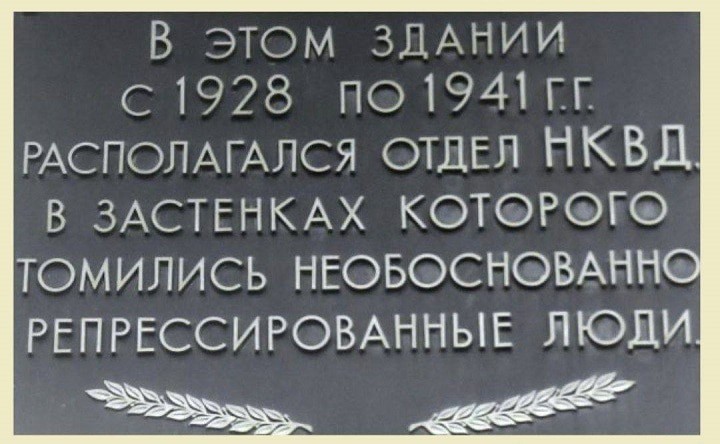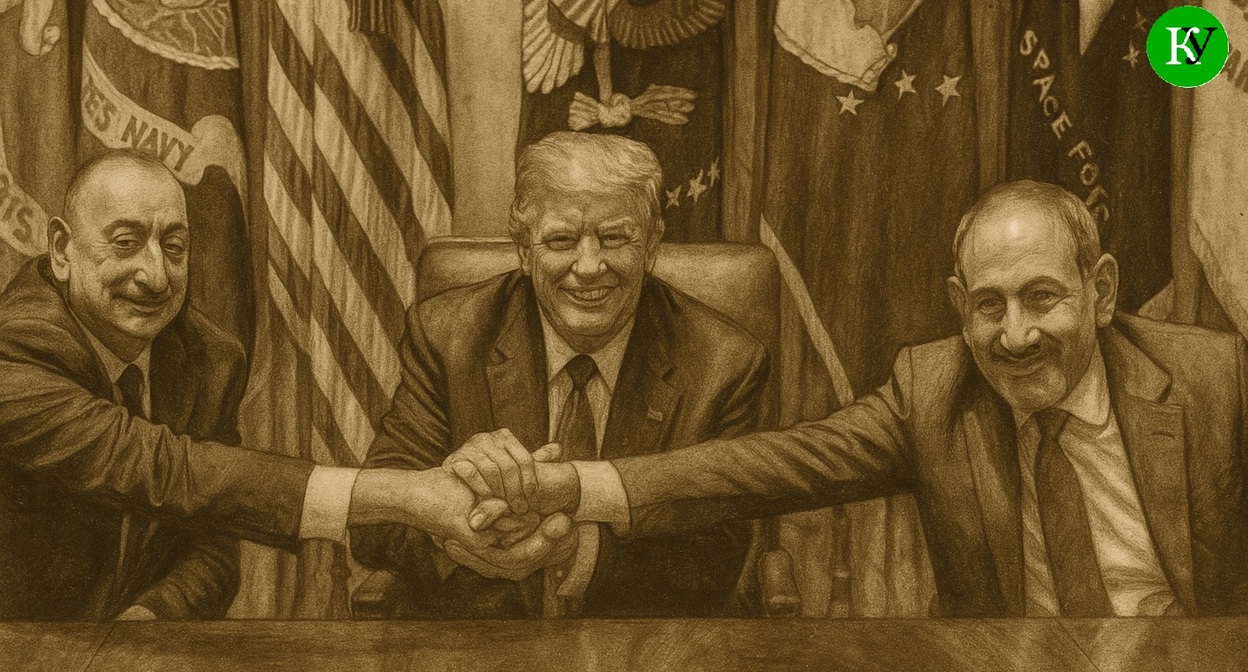In Taganrog, replacement of memorial plaque continues trend of hushing up repressions
A memorial plaque to the memory of victims of repressions has been removed from the building of the former NKVD department in Taganrog on the bottom-level initiative. Such actions are a continuation of the trend of hushing up repressions and glorifying Stalin, historians and political analysts point out.
Rostov political analyst Dmitry Abrosimov has reported that formally one plaque has been replaced with another one.
“They took down the plaque stating that repressions took place in the NKVD building. And they hung up a new plaque stating that NKVD employees worked here, who contributed to the fight against the Nazi invaders,” Dmitry Abrosimov told a “Caucasian Knot” correspondent.
According to the Rostov political analyst’s version, the first plaque on the building of the former NKVD department was hung back in the 1990s.
“At that time, there was an active mayor in Taganrog, he (Sergey Shilo) was later killed. And it was possible under his ruling. Moreover, at that time, a member of the ‘Yabloko’ Party even served as the head of the security agencies in the city. The city was very specific, in fact. When people voted to preserve the Soviet Union, half the city voted against preserving the USSR,” political analyst Dmitry Abrosimov noted.
As for the replacement of the plaque, in his opinion, it is connected with the fact that the anniversary of the defence of Taganrog was being celebrated.
“They (the city authorities) somehow missed it. They did not open any monuments. But even a feature film was shot. And the authorities did not find anything better than to replace the plaque on the building of the former NKVD department,” the political analyst explained.
Dmitry Abrosimov has noted that earlier, in a number of cities in the Rostov Region, including the regional centre, buildings had so-called “last address” plaques.
“Mainly residential buildings, where people lived who were later repressed had such ‘last-address’ plaques. However, at present, they have almost all been removed. As a rule, the reason given was that it was impossible to place without special permission any plaques or boards on a building of historical value,” political analyst Dmitry Abrosimov stated.
Human rights defender Sergey Davidis* believes this is a continuation of the trend of hushing up the repressions of Stalin era.
“The zeal of the local authorities does not happen by itself. It is clear that it was unlikely that President Putin ordered this plaque on this wall to be changed. However, nevertheless, when such zeal from below does not receive any negative reaction from above, it is clear that it meets the request understood by the executors. This is an ideological trend now. It really is. That is, the glorification of the state, the denial of crime on the part of the state, the praise of repressive bodies, the refusal of the cowardly, as they believe, condemnation of any mistakes of the state and these same bodies. This is completely in line with the propaganda or logical policy that the state is pursuing, and regardless of whose initiative it was, this, of course, fits into the trend,” human rights defender Sergey Davidis* stated.
“I think this is a continuation of the long-standing movement to glorify Stalin, as he is also the ‘Marshal of Victory’,” historian Nikita Sokolov* agreed.
Historian Yan Rachinsky* suggests that “this is a local initiative within the trend.” “There have been no orders from above yet, otherwise everything would have been done at a different pace and genre,” Yan Rachinsky* explained.
When asked about the reasons for replacing the plaque, the Taganrog city administration has reported that the owner of the building is the Southern Federal University.
“As the owner, the Southern Federal University is responsible for the safety of the building as a cultural heritage site,” stated a spokesperson of the press service for the Taganrog city administration.
The entire building on which the plaque hangs is protected as a cultural heritage site. The subject of protection also includes the memorial plaque, but the old one, which has been removed. This was directly stated in the official documents, the “Tyutina” Telegram channel reported on May 29.
According to the order issued by the Ministry of Culture of the Rostov Region “On approval of the security obligation of the owner or other legal owner of the cultural heritage site of regional significance ‘Memorial building, the former ‘European’ Hotel, where 12 Red Army soldiers were tortured’ dated May 30, 2016, published on the website of the committee for the protection of cultural heritage sites of the Rostov Region, the description of the building taken under protection also includes the plaque commemorating the victims of repressions.
This was originally published on the Russian page of 24/7 Internet agency ‘Caucasian Knot’ on May 30, 2025 at 03:31 pm MSK. To access the full text of the article, click here.
*Included by the Russian Ministry of Justice (MoJ) into the register of foreign agents.







![Tumso Abdurakhmanov. Screenshot from video posted by Abu-Saddam Shishani [LIVE] http://www.youtube.com/watch?v=mIR3s7AB0Uw Tumso Abdurakhmanov. Screenshot from video posted by Abu-Saddam Shishani [LIVE] http://www.youtube.com/watch?v=mIR3s7AB0Uw](/system/uploads/article_image/image/0001/18460/main_image_Tumso.jpg)